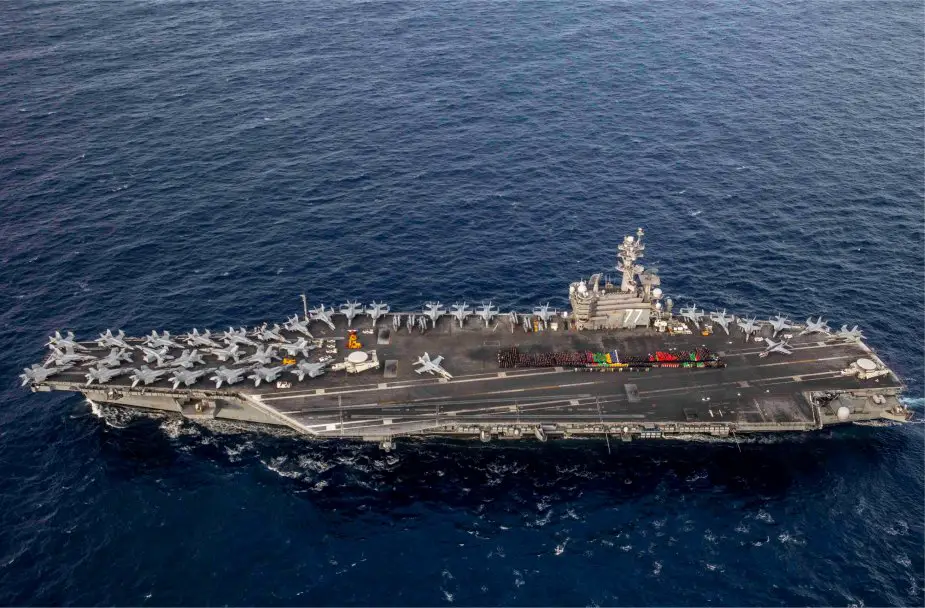Breaking news
Three NATO Carrier Strike Groups joins forces to address new threats.
According to information published by the US DoD on November 25, 2022, three NATO Carrier Strike Groups (CSG) demonstrated their commitment to the security and stability of the Euro-Atlantic Area during multicarrier operations while sailing in the Ionian Sea. Throughout November, five allied CSGs will operate throughout the North Atlantic Ocean and Adriatic and Mediterranean Seas.
Follow Navy Recognition on Google News at this link
 Nimitz class aircraft carrier USS George H.W. Bush. (Picture source: US DoD)
Nimitz class aircraft carrier USS George H.W. Bush. (Picture source: US DoD)
Demonstrating their shared commitment to the collective defense of the Alliance, George H.W. Bush CSG, the French CSG, and Italian Cavour CSG strengthened their ability to generate credible combat power throughout the Euro-Atlantic area while underscoring NATO solidarity, interoperability, and high-end capability.
Multicarrier activities demonstrate the coordination of dispersed allied and partner forces to train and operate in a joint, high-intensity security environment across all domains in the region.
Routine rehearsed interoperability and interchangeability engagements enable NATO nations to enhance their collective rapid response capabilities. This ensures they are prepared to defend the Euro-Atlantic Region while maintaining a safe, secure, and prosperous Europe and global security environment.
NATO is vital to European security and U.S. national interests. Allies and Partners take every opportunity to train together, on a firm foundation of trust, to refine tactics, techniques, and procedures.
George H.W. Bush is the flagship of CSG-10 and the GHWBCSG. CSG-10 is comprised of George H.W. Bush, Carrier Air Wing (CVW) 7, Destroyer Squadron (DESRON) 26, the Information Warfare Commander, and the Ticonderoga-class guided-missile cruiser USS Leyte Gulf (CG 55).
The ships of DESRON-26 within CSG-10 are the Arleigh Burke-class guided-missile destroyers USS Nitze (DDG 94), USS Farragut (DDG 99), USS Truxtun (DDG 103), and USS Delbert D. Black (DDG 119).
About the aircraft carrier George H.W. Bush
USS George H.W. Bush (CVN-77) is the tenth and final Nimitz-class supercarrier of the United States Navy. Construction began in 2003 at the Northrop Grumman Newport News shipyard's Dry Dock 12, the largest in the western hemisphere. She was completed in 2009 at a cost of $6.2 billion and her home port is Naval Station Norfolk, Virginia.
George H.W. Bush measures 1,092 feet (333 m) and displaces over 100,000 tons, making her one of the world's largest warships (though she is slightly shorter than USS Enterprise). Her top speed exceeds 30 knots; powered with two nuclear reactors, she can operate for more than 20 years without refueling.
In addition to the aircraft carried on board, the ships carry defensive equipment for use against missiles and hostile aircraft. These consist of either two or three NATO RIM-7 Sea Sparrow or RIM-162 Evolved SeaSparrow Missile Mk 29 missile launchers designed for defense against aircraft and anti-ship missiles, as well as either three or four 20 mm Phalanx CIWS.



























